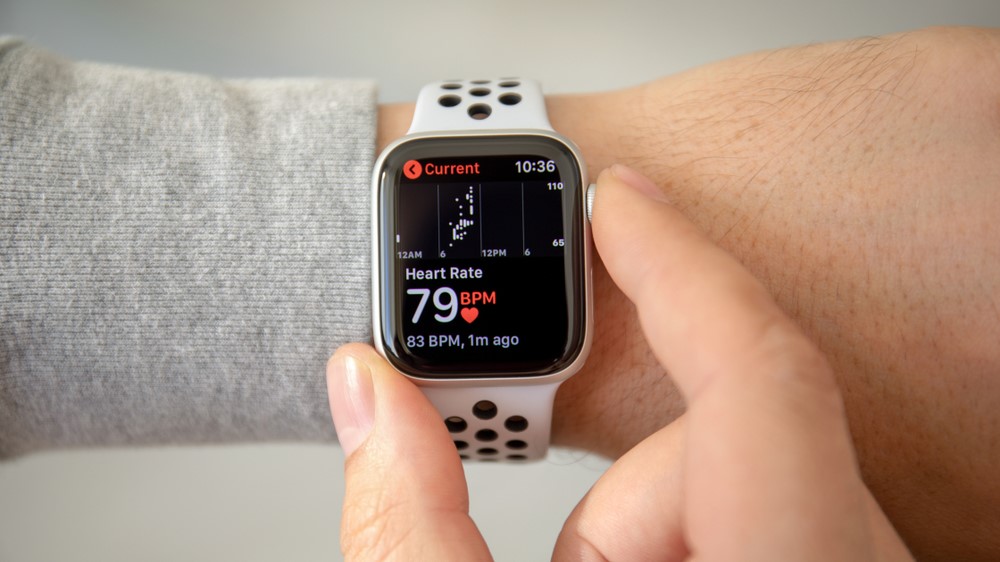This is the minimum amount of cardio you really need each week — and how to achieve it
You can boost your cardio without spending hours in the gym

Cardio isn’t everyone’s first choice of workout — some of us prefer lifting heavy weights in the gym, while others prefer a gentle yoga class or strengthening Pilates workouts.
However, there is a minimum number of minutes you could (or should) spend on cardio to benefit from it, without trying to shoehorn another workout into your busy schedule. And unsurprisingly, it depends on your goals.
The current AHA guidelines recommend a minimum of 150 minutes of moderate-intensity cardio per week and/or 75 minutes of vigorous aerobic activity (think HIIT).
But how could the same number apply to everyone? While these figures could help people stay more active and reduce overall time spent sitting, they don’t take into account individual ages, goals and fitness levels.
Here’s what you should really be thinking about the next time you clock up your cardio minutes, and why it matters.
How much cardio do you need?

Cardiovascular exercise builds a stronger heart and lungs and reduces your risk of developing chronic diseases like diabetes. The more intensity you introduce, the less you may need to do to benefit, as research identifies pace (or intensity) as a potentially more crucial metric than step count. For most people, a mix of intensities could help you reach your goals and maintain consistency.
As mentioned above, guidelines suggest we should aim for 150 minutes of moderate-intensity cardio per week. But fear not, you could split these efforts across the days.
Get instant access to breaking news, the hottest reviews, great deals and helpful tips.
For example, 30 minutes of walking five days per week would be enough to hit that quota. Moderate-intensity cardio should increase your heart rate while allowing you to maintain a conversation with a friend.
Learning about the rate of perceived exertion (RPE) will help you determine what this looks like, but aim for roughly 5/10 or 60-70% of your maximum heart rate (more on that below). Think a brisk walk with your dog, for example, or steady-state jogging. Other examples include dynamic yoga and some types of Pilates.
Vigorous-intensity cardio looks like a 7/10 effort or above, or 80-90% of your maximum heart rate, working closer to your maximum capacity; this could include a HIIT class, sprints, or spin classes. 75 minutes is enough to hit your weekly quota and can be divided up however you like.
For example, just one 60-minute workout class like CrossFit would leave you with just 15 minutes left to achieve. Other activities include a game of tennis, dancing, or hiking uphill.
150 minutes of moderate-intensity cardio and/or 75 minutes of vigorous-intensity exercise per week are the recommended minimum guidelines. However, some people could manage 300 minutes of moderate-intensity and 180 minutes of vigorous activity.
Remember, these are guidelines. If you are training for an endurance race like a marathon or Hyrox, your cardio output targets will be higher and you'll likely be following a training plan.
Current activity levels, health and age all matter too, as you might need to start slow and build up, or you could start at as much as 300 minutes of moderate-intensity exercise per week or 180 minutes of vigorous activity if you are well-trained.
Stamping the same number on everyone doesn’t take into account individual goals and health, so try to start with a manageable amount and increase when you feel ready. Working with a personal trainer or running coach is also a safe and effective way to build out a plan tailored to you if you’re unsure where to start.
How to measure heart rate zones

To accurately measure your heart rate zones, strapping on one of the best fitness trackers could take the guesswork out of things. If you don’t own one, you can calculate your resting heart rate and then measure your zones from here.
To calculate your resting heart rate, simply find your pulse, then count the beats for 30 seconds and multiply by two. To calculate your maximum heart rate, subtract your age from 220.
A lower resting heart rate is generally associated with higher cardiovascular fitness and better overall fitness and health. A naturally high resting heart rate could increase your risk of cardiovascular conditions and can be caused by a health condition or lifestyle factors.
Bottom line

Alongside adding at least 150 minutes of cardio to your routine, dialing into nutrition and resistance training will enhance your health even more, helping you manage your weight, build strength, or grow muscle.
Whatever your goals, consistency is key. Progressing your routine over time (weeks and months) will help you see results without burning out, so you're looking for sustainable training.
Research shows that strength training just twice per week could be enough to see results, and national guidelines also suggest the same. Again, this could be split into 20 or even 30-minute efforts, and you could even combine cardio and resistance training, or high and low-intensity efforts. Breaking things up is known as exercise snacking and will help you achieve your output efforts without overdoing things.
For example, you could go for a brisk hike or walk for 30 minutes first thing in the morning, then head to the gym for weights later in the day, or take a bike ride. Even just two muscle-strengthening activities per week are enough for you to see results.
Regardless of how you split things up, aim for some type of activity each day that gets you onto your feet more often. NEAT (Non-Exercise Activity Thermogenesis) refers to energy expenditure outside of dedicated workout efforts; this could include gardening, taking calls while standing up, playing with your grandkids, or hanging out with your dog. You could even add load to your gentle walks, like wearing a heavy rucksack or ankle weights.
More from Tom's Guide
- Forget running and swimming — study finds this sport adds 10 years to your life
- I thought power walking was weird — here's what happened when I tried it 30 minutes a day for one week
- No, not crunches: These 4 standing ab exercises from Jennifer Aniston’s PT build real core strength and stability

Sam Hopes is a level 3 qualified trainer, a level 2 Reiki practitioner and fitness editor at Tom's Guide. She is also currently undertaking her Yoga For Athletes training course.
Sam has written for various fitness brands and websites over the years and has experience across brands at Future, such as Live Science, Fit&Well, Coach, and T3.
Having coached at fitness studios like F45 and Virgin Active and personal trained, Sam now primarily teaches outdoor bootcamps, bodyweight, calisthenics and kettlebells.
She also coaches mobility and flexibility classes several times a week and believes that true strength comes from a holistic approach to training your body.
Sam has completed two mixed doubles Hyrox competitions in London and the Netherlands and finished her first doubles attempt in 1:11.
You must confirm your public display name before commenting
Please logout and then login again, you will then be prompted to enter your display name.
